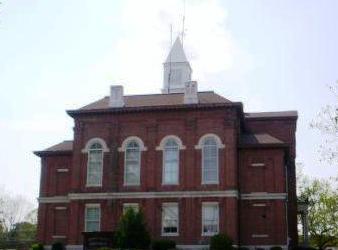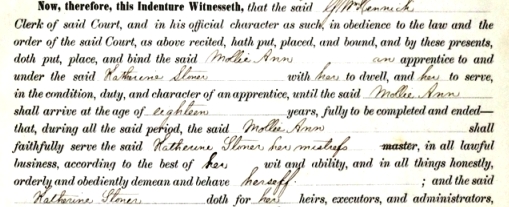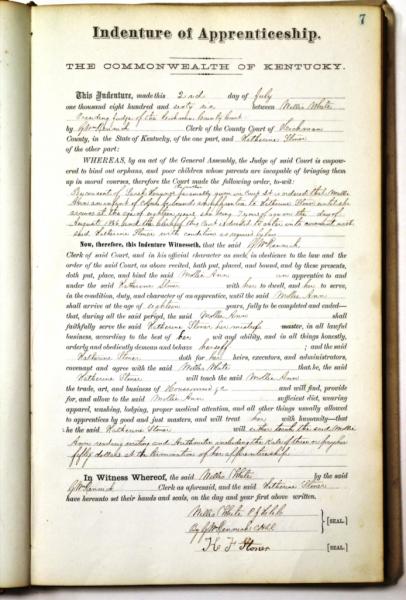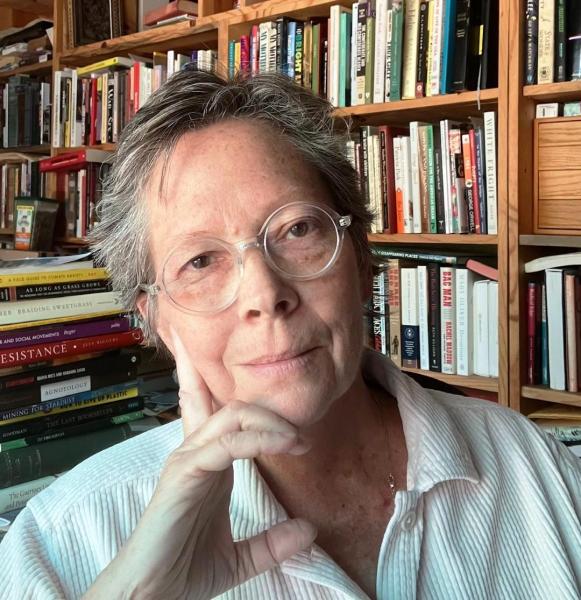 Indenture of Apprenticeships in post Civil War era are on file in Hickman County Courthouse. Indenture in colonial America was a popular way for immigrants who could ill afford passage from the old country to the new world. Employers provided transportation in return for a contractually agreed period of time.
At the end of the time, under the best circumstances, the new American was free to seek his or her fortune. It didn't always work as advantageous to the indentured as advertised but for most European immigrants, working for room, board and passage was preferable to spending their lives as serfs in their native countries.
The indentured of early America had a chance of freedom. Slaves did not. Their status extended to their children and their children's children. Kentucky's slave population was not spread evenly but clustered into regions.
According to Wikipedia "The history of slavery in Kentucky dates from the earliest permanent European settlements in the state, until the end of the Civil War. Kentucky was classified as the Upper South or a border state, and enslaved African Americans represented 24% by 1830, but declined to 19.5% by 1860 on the eve of the Civil War. The majority of enslaved people in Kentucky were concentrated in the cities of Louisville and Lexington, in the fertile Bluegrass Region as well the Jackson Purchase, both the largest hemp- and tobacco-producing areas in the state."
Beginning in March of 1865, Congress authorized Freedmen Bureaus. The Bureaus oversaw freedmen schools for a few years following the Civil War. Programs were set up throughout the old Confederacy.
In Hickman County, a freedmen school taught skills badly needed by freed slaves: literacy, mathematics and other skills. Freedmen schools lasted three years here before funding ran out in the face of Northern indifference and Southern opposition.
Post Civil War Reconstruction was highly unpopular in the South. Getting around it included sharecropping, Jim Crow and voting restrictions. In Kentucky, the Legislature came up with a clever idea to answer the labor shortage caused by losing 20% of its unpaid labor force. The answer was reviving and expanding the system of indentured servitude to orphans and poor children. State law created a system (complete with fill-in-the-blank forms) that empowered the County Judge to "bind out orphans, and children whose parents are incapable of bringing them up in moral courses." Indentures of Apprenticeship were filed in the Office of the County Clerk.
Professor Kit-Bacon Gressitt of California State San Marcos spent several weeks this summer in Hickman County researching indenture contracts in the Hickman County Courthouse. Her fantasy was to track down some descendants of the indentured children. During her stay, she wasn't able to track down descendants because naming conventions of enslaved people, paltry records of Black folks' lives, and the exodus from Clinton made the search impossible to complete in the time she had. She was able to photograph all the records of apprenticeship on file.
In July 1866, one Indenture of Apprenticeship filed in Hickman County, Kentucky, was for little Mollie Ann Haynes, age seven. Mollie Ann would faithfully serve Katherine Stoner, "her mistress," until she should reach the age of eighteen years. If Stoner dies, Mollie would continue to serve honestly, orderly and obediently demean and behave herself to her heirs, executors and administrators. In return, Stoner agreed to teach her the business of "house maid' and would provide apparel, housing, medical attention and reading, writing and arithmetic. At the end of the eleven year term, Mollie would be paid $50.

Another indenture involved brothers, James and John, apprenticed in 1868 to a farmer until they reached the age of 21 in 1870. Their master agreed to teach them farming, reading writing and arithmetic including the Rule of Three or paying them $100 at the end of their apprenticeship. Without last names, tracking down James and John would be virtually impossible. Later indenture contracts were for White children, but the earliest were all Black children. Records of what happened to the children are unavailable.
Indenture of Apprenticeship may have been the best alternative for orphan children. It may have been a chance to learn new skills and pull themselves out of poverty.
For others, it was an extension of the Black slavery that America fought a long and bitter war to end.

 For more information, Professor Kit-Bacon Gressitt can be reached at Writers Resist where she serves as prose editor and publisher. For more information, Professor Kit-Bacon Gressitt can be reached at Writers Resist where she serves as prose editor and publisher.
|





 For more information, Professor Kit-Bacon Gressitt can be reached at
For more information, Professor Kit-Bacon Gressitt can be reached at 



